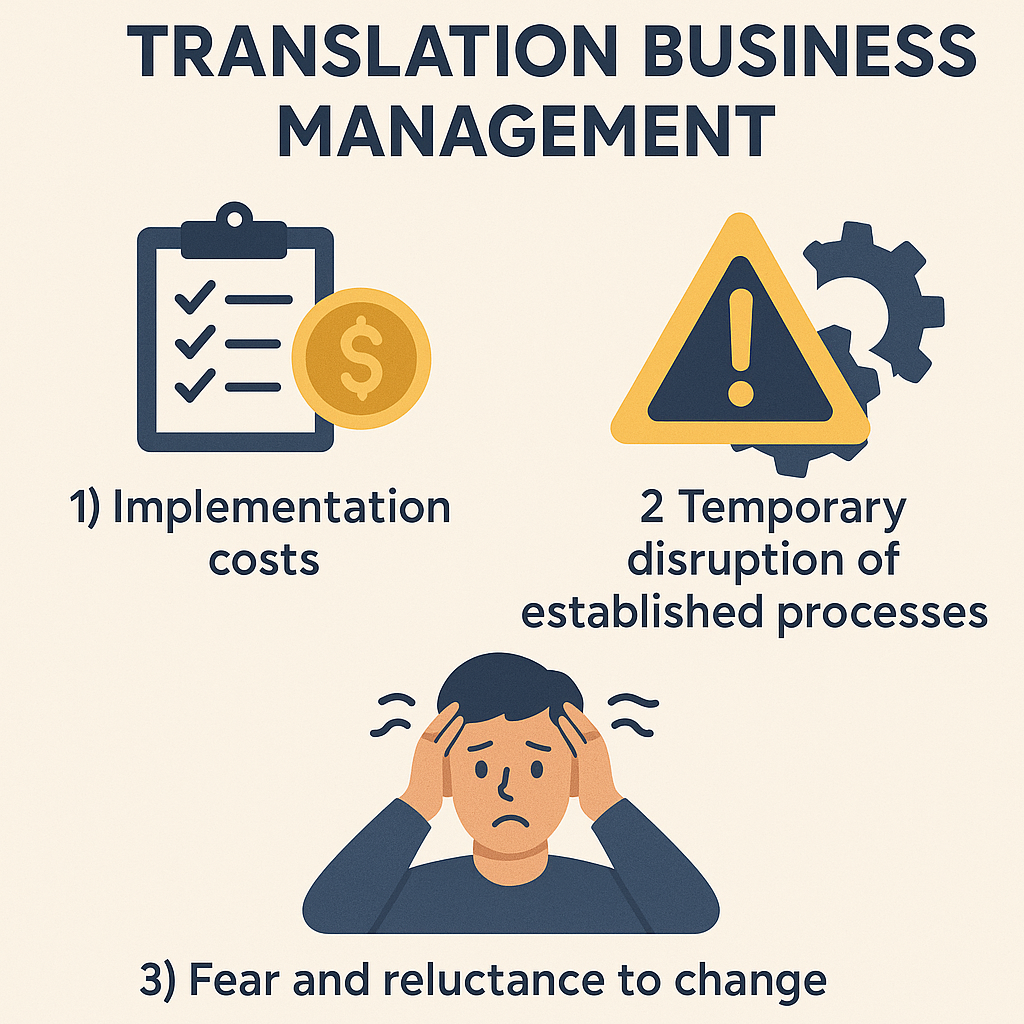
Translation Business Management software is a kind of tool that, once implemented and used, tends to remain unchanged for years. It is hard to replace it for a number of reasons:
1) Implementation costs. New software needs to be installed, and people need to be trained to use it.
2) Temporary disruption of established processes. Each system works differently, and until it is adjusted to internal workflows, something might not function perfectly.
3) Fear and reluctance to change. It’s human nature. We do not like changes, even if we know they are for the better. Deep in our minds, there is an ancient instinct that treats new environments as threats, much like in prehistoric times. Sometimes it is hard to overcome those instincts.
Still, many LSPs do change their translation business management software over time. Here are the main reasons:
Too Old and Dysfunctional

This typically occurs when an LSP uses software that was either purchased over 15–20 years ago or developed in-house and no longer maintained. These tools become hopelessly obsolete. Recognizing this often prompts CEOs to make the switch to something new. Sometimes this switch is reluctant, and the gap between the decision and implementation may take years because the old tool still works—somehow. But sooner or later, reality knocks at the door, much like historical cases where old technologies and traditions endured only until a competitor disrupted the status quo. Change is inevitable.
Too Complicated or Too Simple

The bigger the company, the more complex its internal processes. A sole proprietor can manage everything mentally. A small team may develop basic, often undocumented, rules. Mid-sized companies may have corporate rulebooks, and large corporations require thorough documentation and process control just to keep operations manageable.
Each of these business types needs a different kind of management tool. Software developers attempt to build tools that fit all, but the “one size fits all” approach rarely works in practice. A small LSP does not need a complex interface with features designed for MLVs. If those cannot be disabled, they become distractions. Conversely, a large MLV may find simple, intuitive functionality insufficient and require customizations.
In such cases, replacing the tool with a simpler and more intuitive one is often an upgrade, not a downgrade, because it better fits the company's needs.
Quality of Service and Support

This is the elephant in the room. Many LSPs do not consider the importance of support until after purchasing a business management system, when it may be too late. No matter how great the software is, users need training and support to adapt it to their company’s processes and culture.
A good support team is critical. And not just a chatbot, but a real human—someone who responds quickly, understands your case, provides solutions, and offers guidance. Ideally, someone who can even schedule a video call to demonstrate the system. Unfortunately, not every development team can provide this.
Users who do not receive adequate support may become frustrated and eventually switch providers. In one extreme case, a provider shut down an entire TBMS system because the CEO’s credit card expired while he was on vacation. Unsurprisingly, the client immediately decided to change providers.
So remember: a translation business management system is not just software, it is a service. The quality of both matters.
Unification After Mergers and Acquisitions

When language service companies merge or acquire one another, they must unify their processes to function as one organization. Using the same translation business management system is part of this unification. If two companies use different systems, one must be chosen. This decision usually rests with the party holding greater influence or voting rights.
Cost

Cost is not the primary factor in choosing a TBMS. Most LSPs prefer functionality over price. However, sometimes companies choose expensive software based on brand reputation rather than functionality. When the investment fails to deliver the expected return, a more affordable option is reconsidered.
Switching TBMS does not happen overnight, as discussed earlier. Besides, people feel attached to systems they’ve invested time and money in. If you spend a significant portion of your budget on a well-marketed TBMS, you’ll naturally resist switching to a cheaper alternative, even if it’s better. Ultimately, change usually occurs when cost concerns combine with other issues described above.
Summary

Changing a Translation Business Management System (TBMS) is never an easy decision for LSPs due to the costs, risks, and resistance involved. However, many factors eventually push companies to make the leap:
- Outdated or unsupported systems become bottlenecks.
- A mismatch in complexity. Too simple for large LSPs, too complex for small ones—hinders efficiency.
- Poor customer support can ruin even the best tools.
- Mergers and acquisitions often require unification under a single system.
- Cost-effectiveness becomes important when expensive tools fail to deliver.
In the end, a TBMS isn’t just a tool. It’s a long-term partner in business operations. Like any partnership, it must evolve, adapt, and be reevaluated when it no longer serves its purpose. LSPs that recognize this and act proactively will become more resilient, scalable, and ready for future growth.





